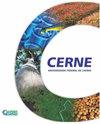苏格兰松林分地上净初级生产量、凋落物和碳储量之比(俄罗斯)
IF 0.7
4区 农林科学
Q3 FORESTRY
引用次数: 1
摘要
背景:森林是温室气体浓度的主要陆地调节者。然而,对其中碳通量的估计具有很大的不确定性。因此,对其进行评估的预测因子的推导是一项紧迫的任务。目的是评估生物量中的碳储量,以表征欧洲东北部不同类型苏格兰松林地上净产量的强度和凋落物的数量。利用样木估算林分生物量和地上净初级生产量。对于地表植被生物量和初级生产的评价,我们在625 cm 2的面积上砍掉所有地上器官,去掉第一年的部分。利用垃圾捕集器收集凋落物,时间为3-6年。结果:松林生物量中的碳大部分集中在乔木(C林分)中,以茎材为主。然而,在沼泽森林中,地面植被对碳储量的绝对和相对价值都起着重要作用。我们估算了ANPP和林分凋落物的碳通量。在这些流动中检测到针状物的高贡献。ANPP与C林分的比值为0.018 ~ 0.056,凋落物与C林分的比值为0.008 ~ 0.024。结论:森林的生物量、总磷和凋落物取决于森林类型。所获得的两者之间的比率可用于利用森林生物量的远程数据收集来评估大区域的碳通量。本文章由计算机程序翻译,如有差异,请以英文原文为准。
Ratios between aboveground net primary production, litterfall and carbon stocks in scots pine stands (Russia)
Background: Forests are the main terrestrial regulators of greenhouse gas concentrations. However, estimates of carbon fluxes in them are characterized by large uncertainties. Therefore, the derivation of predictors for their assessment is an urgent task. The aim was to assess the carbon stocks in the biomass to characterize the intensity of aboveground net production and the amount of litterfall in Scots pine forests of different types on the North-East of the Europe. We estimated biomass and aboveground net primary production (ANPP) of stands using sample trees. For vegetation of ground cover biomass and primary production evaluating, we cut off all aboveground organs on an area of 625 cm 2 and removed the first-year parts. Litterfall was collected over 3–6 years using litter traps. Results: Most of the carbon in the biomass of pine forests is concentrated in trees (C stand ) with dominating role of stem wood. However, in boggy forests, ground vegetation plays a significant role in carbon stocks, both in absolute and relative values. We estimated carbon fluxes in ANPP and stand litterfall. High contribution of needles was detected for these flows. The ratio between ANPP and C stand varied from 0.018 to 0.056 but between Litterfal and C stand ranged from 0.008 to 0.024. Conclusion: The biomass, ANPP and litterfall depended form forest type. Obtained ratios between them can be used for assessing carbon fluxes in large regions using remote data collection of forest biomass.
求助全文
通过发布文献求助,成功后即可免费获取论文全文。
去求助
来源期刊

Cerne
农林科学-林学
CiteScore
1.60
自引率
0.00%
发文量
2
审稿时长
6-12 weeks
期刊介绍:
Cerne is a journal edited by the Federal University of Lavras, Minas Gerais state, Brazil, which quarterly publishes original articles that represent relevant contribution to Forestry Science development (Forest ecology, Forest Management, Silviculture, Technology of Forest Products).
 求助内容:
求助内容: 应助结果提醒方式:
应助结果提醒方式:


